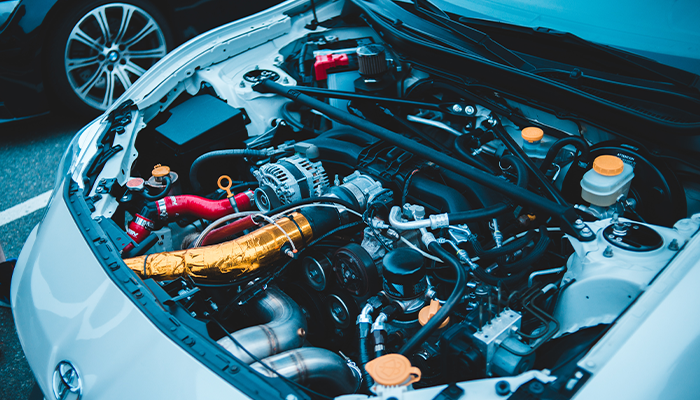The Evaporative Emission System (EVAP) is a crucial component in modern vehicles that plays a pivotal role in reducing harmful emissions and preserving air quality.
This comprehensive guide will delve into the intricacies of how the EVAP system functions, its components, and its significance in maintaining a clean and efficient automotive environment.
I. Introduction to the EVAP System
A. Definition and Purpose
The Evaporative Emission System (EVAP) is designed to capture and store fuel vapors that would otherwise be released into the atmosphere. This system helps prevent the escape of harmful hydrocarbons, a major contributor to air pollution and ensures compliance with environmental regulations.
II. Components of the EVAP System
A. Charcoal Canister
The charcoal canister is a key component that acts as a storage unit for fuel vapors. It contains activated charcoal, which absorbs and retains the hydrocarbons emitted from the fuel tank.
B. Purge Valve
The purge valve is responsible for controlling the release of stored vapors from the charcoal canister into the engine. This process occurs during specific driving conditions, such as when the engine is warm and running at a certain speed.
C. Vent Valve
The vent valve is designed to regulate the flow of fresh air into the charcoal canister. It opens to allow atmospheric air to replace the purged vapors, maintaining proper pressure within the system.
D. Fuel Tank
The fuel tank is where fuel is stored in the vehicle. It is a sealed container equipped with a pressure sensor to monitor changes in pressure within the tank.
III. Operation of the EVAP System
A. Normal Driving Conditions
- Closed System Operation: During normal driving conditions, the EVAP system operates in a closed loop. The charcoal canister captures and stores fuel vapors, preventing their release into the environment.
- Pressure Monitoring: The pressure sensor in the fuel tank continuously monitors pressure changes. If pressure deviates from the specified range, the system activates to address any issues.
B. Purge Cycle
- Engine Warm-up: When the engine reaches operating temperature, the purge valve opens, allowing the stored vapors in the charcoal canister to be drawn into the engine and burned alongside the regular air-fuel mixture.
- Optimal Driving Conditions: The purge valve operates during specific driving conditions, such as highway speeds or consistent engine RPM, ensuring efficient combustion of the purged vapors.
C. Leak Detection
- System Integrity Test: The EVAP system performs periodic tests to check for leaks. This is usually done by sealing the system and monitoring pressure changes. Any significant pressure drop indicates a potential leak.
- Diagnostic Trouble Codes (DTCs): If a leak is detected, the vehicle’s onboard diagnostics system stores a trouble code, illuminating the check engine light and prompting further inspection and repair.
IV. Common Issues and Troubleshooting
A. Evap System Malfunctions
- Check Engine Light: A common indicator of EVAP system issues is the illumination of the check engine light on the dashboard.
- DTC Retrieval: Advanced diagnostic tools can retrieve specific trouble codes related to the EVAP system, aiding in pinpointing the cause of the malfunction.
B. Common Causes of EVAP System Problems
- Loose or Damaged Gas Cap: A loose or damaged gas cap is a frequent culprit, allowing fuel vapors to escape and triggering the check engine light.
- Leaking Hoses or Connections: Cracked or disconnected hoses, as well as faulty connections, can lead to leaks in the EVAP system.
V. Importance of the EVAP System
A. Environmental Impact
- Emission Reduction: The EVAP system significantly reduces the release of harmful hydrocarbons into the atmosphere, contributing to air quality improvement.
- Regulatory Compliance: Strict environmental regulations mandate the integration of effective emission control systems like EVAP in modern vehicles to meet emission standards.
B. Fuel Efficiency
- Optimized Combustion: By recycling fuel vapors back into the engine, the EVAP system enhances combustion efficiency, potentially improving fuel economy.
VI. Conclusion
The Evaporative Emission System is an essential component in modern vehicles, addressing environmental concerns and promoting cleaner air.
Understanding its operation, components, and the significance of proper maintenance empowers vehicle owners and technicians to ensure optimal performance and compliance with emission standards.
Regular inspection, timely repairs, and adherence to environmental regulations collectively contribute to a sustainable and efficient automotive future.
Credit: Photo by Erik Mclean on Unsplash
